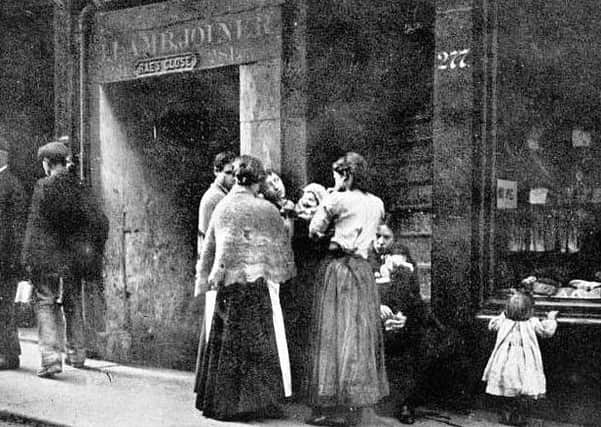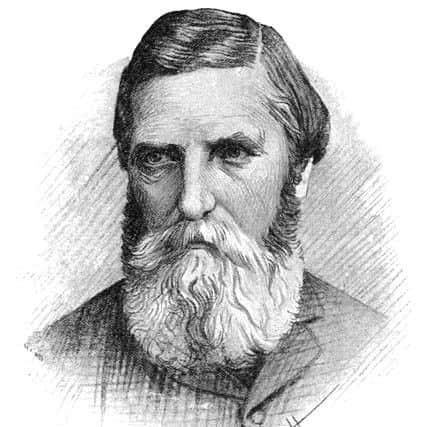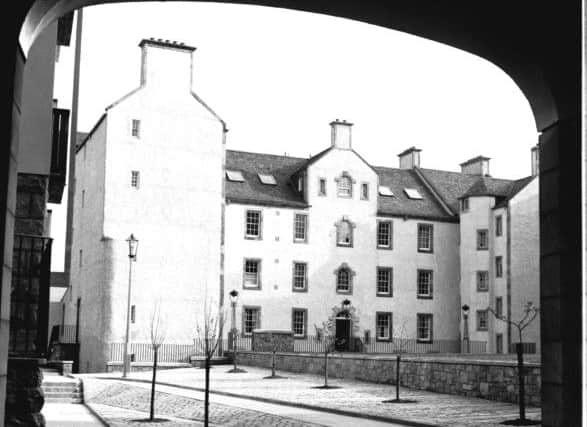The day a fireworks factory exploded in an Edinburgh tenement


Pure fiction of course, but did Ballantyne, on Wednesday October 9, 1867, take part in a real-life brave, but alas, unsuccessful dramatic bid to rescue a young girl trapped in a blazing smoke-filled Edinburgh tenement?
The premises were the solidly built Chessel’s Court, 240 Canongate, dating from the early 18th century.
It was about 12:30pm on that fateful day.


Advertisement
Hide AdAdvertisement
Hide AdThe pavements were as usual crowded. Even the street was congested to the extent of “almost total destruction”.
Meanwhile in premises located to the rear of the Court and adjacent to Pirrie’s Close on the west, Thomas Hammond, a 34-year-old fireworks maker and tobacconist was busy completing a London order for rockets.
As Hammond was filling one of the rockets the powder ignited and sparks flew about the shop which was filled with inflammable material. Fire broke out and paper used in the manufacture of fireworks caused dense smoke which initially concealed the flames.


The smoke spread through the back entrance of the shop, which opened onto the tenement stairway, was drawn up the well of the stair and into the houses. The tenants automatically made their way to the stair only to find the exit blocked by the smoke. There was only one way of escape - through the windows, but some of the residents were sixty feet up.
Worse was to follow.
In the shop were two kegs of powder and one was open. At 12:45 there was an almighty explosion which was heard all over the town, as powder, rockets and fireworks exploded and fire broke out. The two windows in Hammond’s shop, three in the basement workshop of Duffy the basket-maker and three large windows in the flat above were blown out with such force that glass was embedded in the premises across the street. An iron bar weighing 4 1/2 pounds and part of a window frame were found inside the bakery shop opposite. Flames leaping from the windows shot half way across the street.
Firemen were quickly on the scene but twenty minutes elapsed before the engine appeared. Hoses were connected at the head of St Mary’s Wynd and Riddle’s Close which allowed the flames to be attacked from both front and rear.


As pitiful cries for help came from the upper windows rescue operations began.
From a third floor window, Mrs Henderson bravely dropped her four children, one by one, into the arms of Police Sergeant Auld, and as the last, a boy, was saved, Auld was knocked unconscious caused by a blow on the chest as he caught the youngster.
Advertisement
Hide AdAdvertisement
Hide AdAuld quickly recovered, however, and then assisted George Riddle, a chimney-sweep, to rescue the mother and another woman by means of a ladder.
Meanwhile, two women were spotted leaning out of a fourth floor window from which smoke was still pouring.


A rope was then passed to the women, who were now out on the ledge. She was persuaded to tie the rope round her waist and as she swung the woman was caught by the policemen.
The second woman was rescued similarly.
And Charles Stewart heroically brought out four women by ladder.
But there was sorrow too. Mrs Jessie Ferguson jumped from the fourth floor and as she lay dying on the pavement, her last words were: “My poor bairn’s in the garret”.
The Scotsman reported that “Mr R M Ballantyne, who arrived on the ground shortly after one o’clock, hearing that Mrs Ferguson had said this, proposed to Mr Slater, a slater, a Mr McPherson, Inspector of Streets and Buildings, that they should try to go up the staircase and search for the child.
Mr McPherson was compelled by the smoke to return in a few minutes but Mr Slater and Mr Ballantyne, keeping their heads as low as possible, succeeded in making their way to the fourth storey.
Some idea of the difficulty and danger of this search may be formed from the fact that Mr Ballantyne had to go four times to the windows to get a little air while engaged in the search. In one of the houses Mr Slater and Mr Ballantyne found a young girl lying on the floor not far from the door. Mr Slater took the poor girl in his arms and carried her swiftly down stairs to the court and through the pend into the front street...”
Alas the girl was dead.
Advertisement
Hide AdAdvertisement
Hide AdWas the R.M. Ballantyne referred to, the famous author? Interestingly the newspaper identifies the occupation of the other rescuers. Ballantyne is referred to by name only.
This article was originally published on 16 November 1992 within a heritage supplement by the Edinburgh Evening News.